Advertisement
Published: December 1st 2006
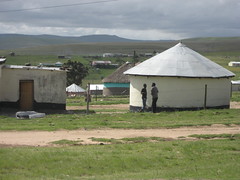
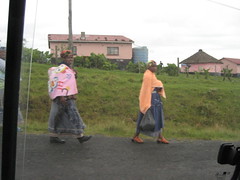
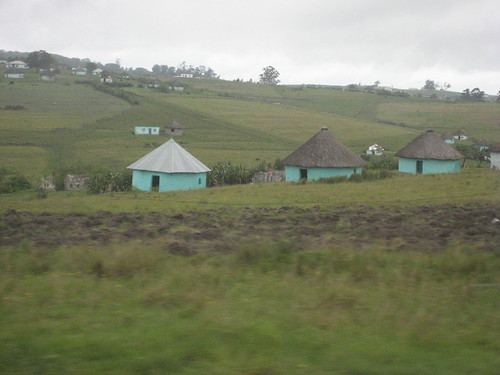

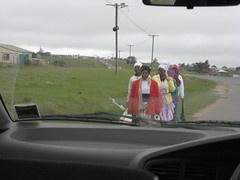
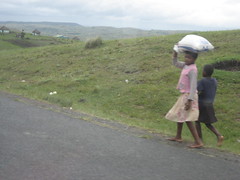
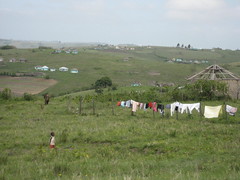
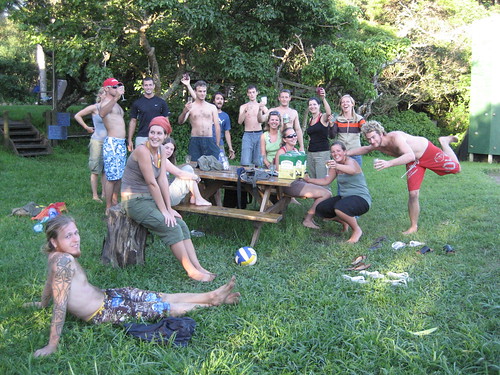
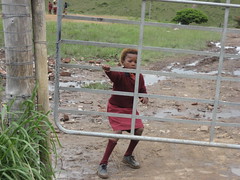
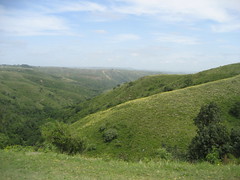
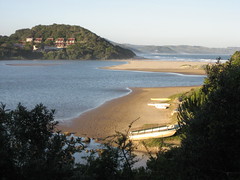
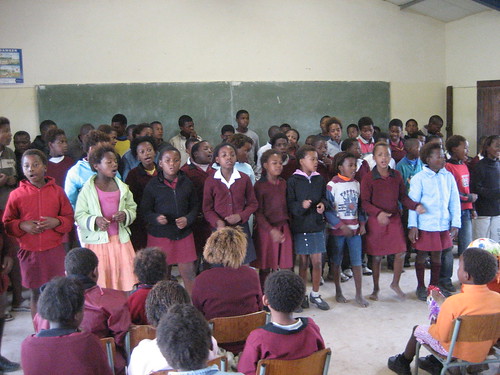
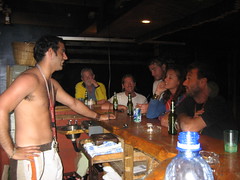
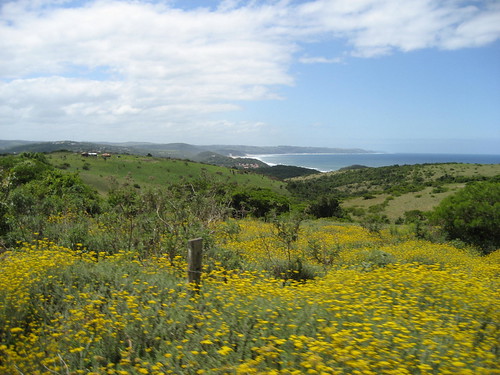
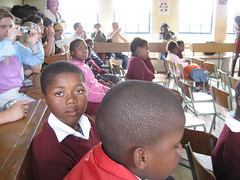
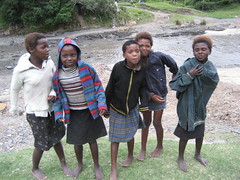
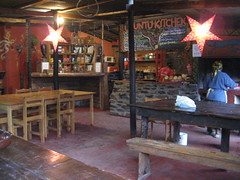
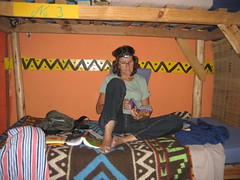
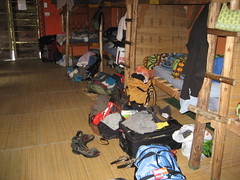
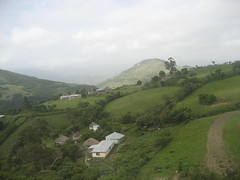
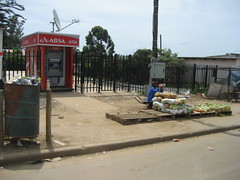
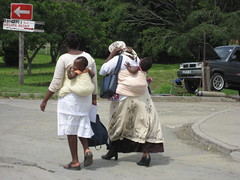
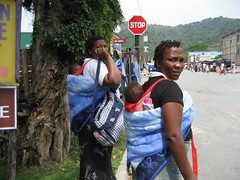
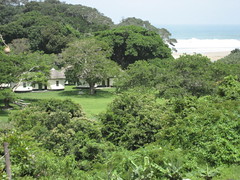
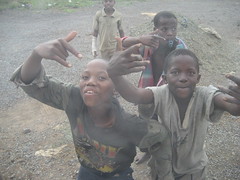
Everyone had referred to the Transkei as the place where you experience the real Africa. Everything so far had been a very western with all the modern amenities.
The Transkei is the homeland area of the Xhosa—the people who live here--and it’s where Nelson Mandela is from and we drove by the home that was built for him after he became president. During Apartheid, people lived here somewhat under their own rule—which meant under their tribal leaders rule. As I understand it, the South African government held a pretty much “hands off” policy in these regions and they did little to help the people. Homelands are not the same as townships, which are crowded slums situated outside most cities. Curfews and restrictions regarding movement of blacks and coloreds were harshly enforced when Apartheid ruled and special passes were required to pass between them.
My first impression was of how green everything is. Recent rains have left the hills very lush. Few trees are present since the area has been deforested--largely due to people using the wood for fuel. The hills are smooth and rounded with deep gorges and there are little villages dotting the landscape. Most of the homes are small and round with thatched or tin roofs and clustered together in small groups. They are painted all kinds of pastel colors—pink, yellow, peach—with turquoise being the favorite.
Cows are fat and happy and everywhere—often on the road. Young boys tend to them as well as to sheep and goats. Lots of people, including children, walk along the sides of narrow roads as cars speed by. Women carry everything on their heads—water, firewood, groceries. Babies are tightly wrapped in a large towel behind the woman. Women are mostly large with big backsides and the image of them bending from the waist to do their work is one I will carry with me. Men are mostly slim and mainly take care of the cattle. Women do most of the work--cooking, carrying wood, cleaning, planting and harvesting crops, washing, shopping and caring for children. According to tradition, men care for cattle and go to war. The rest is done by the women. Men till the soil only because a cow is used.
Towns are few and far between and always are a center where things are sold along the road. People spread out a cloth on the ground to display their wares for sale—fruit, vegetables, clothes, shoes and whatnot. The clusters of homes usually represent where one man lives with his several wives and children--each one with her own hut. AIDS is a huge issue here with estimated HIV and AIDS infection ranging from 40-80% in some regions. Large scale denial of the problem is the rule but all will tell you of the number of funerals they regularly attend.
The five hour drive flew by as a 25 year old Canadian and I gabbed the entire way. He was full of travel tips for the upcoming phase of my journey through Asia. He's been traveling since he was 18 and now works for a multinational finantial company describing himself as "a young man in a old man's job". Very interesting guy.
After driving through this type of landscape for quite a while, we arrived at the Buccaneers--a backpackers in what seemed like the middle of nowhere. It was on a beautiful bluff overlooking the ocean and as the Baz Bus approached, the views of the beach were gorgeous. There were eleven bungalows cascading down the cliff to the beach. Mine had its own kitchen and bath with a beautiful view of the lagoon and beach below.
This was one of the most fun places I have yet stayed in. They organized all kinds of activities, including volleyball and horseback riding along the beach. The bar was always a good time in the evening—largely because of an Irish man named Sam who was the bartender/activties director. They served great hearty meals like shepard's pie and bangers and mash. It was easy to put on a few pounds during my five day stay.
One morning they took us to a nearby school which the hostel sponsors. It was a very simple four room school in the middle of a field of grass. Kids of all ages danced and sang acapella for us. At the end, we each got up and pointed to a map of the world and showed where we were from. I was the only American. With donations from guests, the school has been able to bring in electricity and now is serving breakfasts and lunches. This is often what gets the kids into the classroom. They were all excited about our visit and were especially taken with one of my roommate’s tattoos. He was a great guy—a Swede—and his girlfriend said he ate up the attention. The kids were all over him.
While much of our traveling was inland, we would eventually wind our way back to the coast. This area of S. A. is called the “Wild Coast” and the Baz Bus picks up only three times a week so you have to plan you stays around this schedule. Coffee Bay was the next place I was going to but it was a long ride to get there and I wasn’t that thrilled with the place when I arrived.
First of all, I came in on a Friday—drumming night. The owner of the place was really into drums and invites the local people in one night a week to play them. It just about drove me crazy as my room was just the other side of the bar and the noise went on and on until four in the morning. Everyone was drinking and it seemed like they were in a translike stupor--I know I was. I thought it would never end. It was the most monotonous deadening and excrutiating sound I’ve ever had to endure—over and over the same thing. Even with earplugs, I thought I would go mad.
The only redeeming thing about the place was this guy from New Mexico who shared the room there. He had won a some kind of grant to film his adventures as he traveled around the world. Originally, he planned to do a skateboarding film, but had changed his mind and now wanted it to be “one minute in a day” for everywhere he went. He had just come from spending a month with a Zulu family and had all kinds of interesting insights on that experience. His visit was supposed to be prearranged but when he got there, the family knew nothing of his coming. They still took him in and fed and sheltered him for that month. He tells a fascinating story of all the strange things that happened during his stay with them.
It was nice to leave Coffee Bay and we drove again through more of the same kind of scenery with the round hills, round cows and round huts. Outside it began to get very dark from a storm that was brewing.
It was on this ride that I saw one of the most unusual and spectacular sunsets I’ve ever witnssed. The sky was dark and smokey and the only patch of light was a brilliant yellow-orange band along the horizon. Through this break in the sky, the misty orange light from the setting sun refracted through the water in the sky. Every one of us in the Baz shifted to that side of the van and gazed at the wonder of it. Our cameras betrayed us as no photo came close to what our eyes were seeing.
Gorgeous jacaranda trees began to dot the landscape. For those who don't know this tree, it has a huge canopy of delicate lilac-purple flowers with a color so vibrant that it seems to have its own source of light. They are a beautiful tree but have become somewhat of a nusance in some areas as they sprout up where there is water and use up a lot of the water reserves. This has become a big problem here--but oh what a pretty problem!
As we left the Transkei, the climate changed to one more tropical. Lush tall jungle-like vines grow up trees and the air is warm and humid. Intermittent, torrential thunder and lightning storms descended for the next few days. There were a couple of other places where I stayed along this route. It was now a developed stretch of coastline with vacation homes and beach towns all the way to Durban.
In Port St. Johns, one place billed itself as being on the “second beach” where there had never been a shark attack. “First beach”—only a quarter mile up the coast—had had several in the last few years. Somehow, this was not a reassuring statistic. In fact, this entire stretch of coastline accounts for more shark attacks than anywhere else in the world.
Another interesting note is that while waiting for the bus I was listening to a young blond, blue eyed man talking fluently with a Xhosa woman in her tongue--using all the unusual clicking sounds found in that language. It was very odd to hear--for me. His friend explained that he was an Africaner (a Boer of Dutch decent) who grew up on a farm near Xhosa kids and played with them so he knows the language as they do. Turns out that it's not that unusual.
When I asked about snakes at one place, she said that they mostly only had green tree snakes……. and, Oh yes, there was a green mamba on the property last month. They are bigger and fatter—but still green. Oh, and she saw a black mamba two weeks ago on the railroad tracks which are located just behind the backpackers. Needless to say, I watched where I walked around this place. It’s located near high-end vacation homes so I guess people around here just learn to live with them.
My goal now was to reach Durban, where I would be staying with a woman my parents had met whilst she was traveling in the U.S. a few years back. She had invited me to stay with her. I was ready for a little city life and had plenty to accomplish while there.
Advertisement
Tot: 0.152s; Tpl: 0.011s; cc: 11; qc: 48; dbt: 0.0594s; 1; m:domysql w:travelblog (10.17.0.13); sld: 1;
; mem: 1.2mb
























